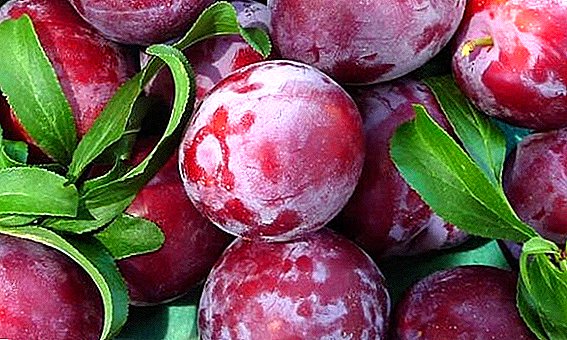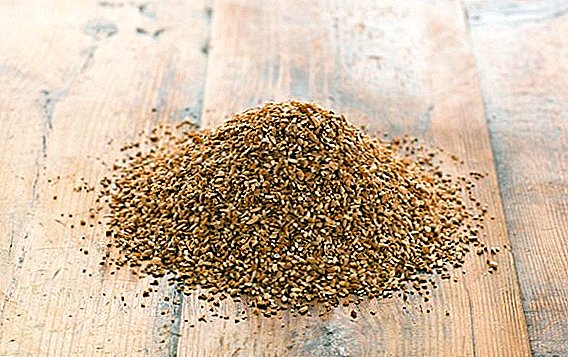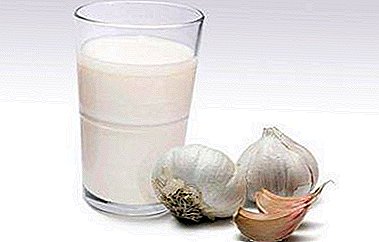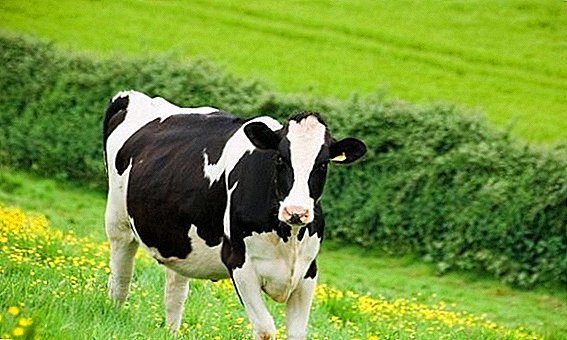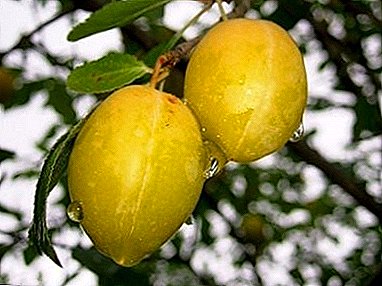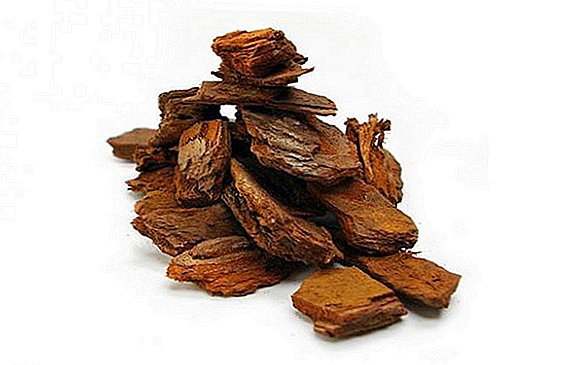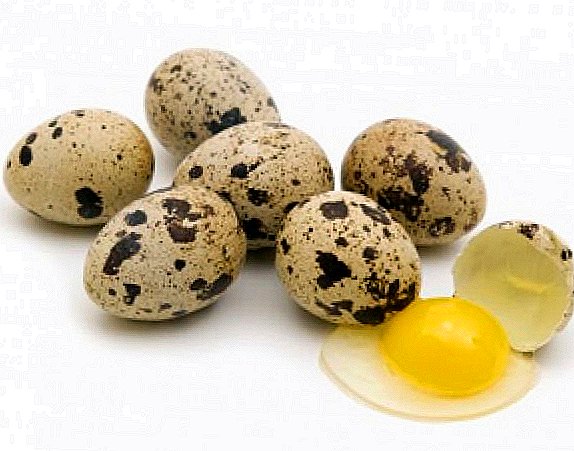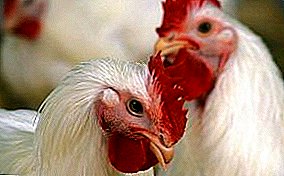
Chickens and turkeys, and sometimes geese and ducks, suffer from various viral diseases. Some of them respond well to treatment, and some do not.
The second group of such diseases includes leukemia. That he can cause the death of most of the livestock of poultry.
Avian leukemia is a viral disease that is accompanied by the growth of unripe cells of the erythropoietic and glycopoietic systems.
This disease can affect any poultry, but most often it is recorded in turkeys and chickens. As a rule, leukemia is latent, but exacerbations are also possible in the first month of egg-laying in young layers.
What is bird leukemia?
The most sensitive to the leukemia virus are chicken hens of all breeds of turkeys. Much more resistant to this disease is revealed in poultry meat breeds.
 Famous scientists F. Rolof, A. Moore, K. Canarini, E. Butterfield, and N. A. Soshestvenskiy described birds in birds at the beginning of the 20th century.
Famous scientists F. Rolof, A. Moore, K. Canarini, E. Butterfield, and N. A. Soshestvenskiy described birds in birds at the beginning of the 20th century.
They noticed that the bird greatly increases the liver, gradually increases the level of leukocytes in the blood.
After this, V. Ellerman and O. Bang took up the study of the disease, who completed several studies on the pathology of the disease in poultry. Until now, modern veterinarians are turning to their work to establish the exact diagnosis.
Bird leukemia is quite common throughout the world. His outbreaks have been reported in 50 countries around the world. Only in Russia the number of diseased birds is 0.8%.
This disease causes great economic damage due to the forced slaughter of a viable bird. In addition, in patients with individuals, productivity is significantly reduced, reproduction of the herd is disturbed, which also adversely affects the financial situation of the farm.
Pathogens
 The causative agent of leukemia is RNA-containing retrovirus.
The causative agent of leukemia is RNA-containing retrovirus.
He is able to lose its activity at a temperature of 46 ° C and above. When heated to 70 ° C, the leukemia virus becomes inactive after half an hour, at 85 ° C - after 10 s.
However, this virus easily tolerates freezing. At a temperature of -78 ° C, it can remain viable for a year.
It was observed that the leukemia-causing retrovirus is resistant to x-rays, but becomes unstable after exposure to ether and chloroform. That is why these chemicals are used to disinfect premises.
Course and symptoms
 The pathogenesis of leukemia is not well understood.
The pathogenesis of leukemia is not well understood.
So far, it is precisely known that the development of this disease completely disrupts the processes of normal maturation of hematopoietic cells, as well as excessive reproduction of cells and their elements in all organs of sick birds.
Depending on the cellular composition of tumors, specialists distinguish lymphoid, myeloid, erythroblastic leukemia. Hemocytoblastosis and reticuloendotheliosis also exist. All forms of leukemia have the same symptoms in different species of domestic birds.
Disease birds and carriers of this virus act as carriers of the disease.. As a rule, the number of individuals carrying the virus can vary from 5% to 70%. Usually these are young birds, as the number of such birds decreases sharply with age.
From the body of sick birds, the virus can be excreted with feces, saliva and eggs. Moreover, this virus is always transmitted through the maternal line. As for infected roosters, turkeys and geese, they cannot transfer the retrovirus from the testes to the female's body.
Most often, leukemia is transmitted through hatching eggs - in a vertical way. This way of transmitting the disease is dangerous, since at the initial stage it is difficult to understand whether the young are sick or not.
Gradually infected embryos turn into hatched chicks, which subsequently infect the rest of the individuals by airborne droplets.
Diagnostics
 The main role in the diagnosis of avian leukemia is played by pathological examination of the affected organs, since the disease is not always easy to establish according to the symptoms and signs.
The main role in the diagnosis of avian leukemia is played by pathological examination of the affected organs, since the disease is not always easy to establish according to the symptoms and signs.
As for hematological research, it is convenient to apply it on the territory of small farms. Unfortunately, such a study cannot be conducted on a larger scale.
Important in the diagnosis of leukemia plays laboratory diagnostics. It is based on the definition of a group-specific antigen of viruses of the leukemic group. Their identification is carried out using the RIF-test.
Treatment and Prevention
Unfortunately, a vaccine against leukemia has not yet been developed, so poultry continues to die from this disease. There is also no specific treatment, so the only thing that remains for the poultry breeders is to strictly observe all preventive measures.
 In order to protect the healthy livestock of poultry on the farm, it is necessary to buy young and hatching eggs only on obviously prosperous farms.
In order to protect the healthy livestock of poultry on the farm, it is necessary to buy young and hatching eggs only on obviously prosperous farms.
Moreover, all purchased young must be absent even the slightest signs of the disease. They must be active and strong.
All birds that live on the farm must be properly kept. Also need closely monitor the condition of sick and weakened individuals. They must eliminate any viral diseases that can adversely affect the immune system of other individuals and lead to leukemia.
A dead or involuntarily killed bird must undergo a mandatory autopsy. This procedure allows you to establish what the bird was sick. In case of detection of leukemia, the entire household must undergo additional disinfection. At the time of the forced disinfection set quarantine.
 Lovely Milfleur chickens require special attention to themselves. Need to know how to care for them.
Lovely Milfleur chickens require special attention to themselves. Need to know how to care for them.At the address //selo.guru/stroitelstvo/gidroizolyatsiy/fundament-svoimi-rukami.html you can find out the materials that are needed for waterproofing the foundation.
It should last until the complete treatment of all premises is completed. After that, the farm can be closed for 1-2 months. If the manifestation of leukemia stops, then the breeders will again be able to engage in poultry.
Conclusion
Leukemia is an incurable viral disease. So far, veterinarians have not been able to develop an effective vaccine that can kill the causative agent of this disease.
Because of this, breeders only need to be attentive to the purchase of young animals and eggs, and also to properly maintain a healthy bird. Sometimes even simple preventive measures can save chickens, turkeys, geese and ducks from death.




